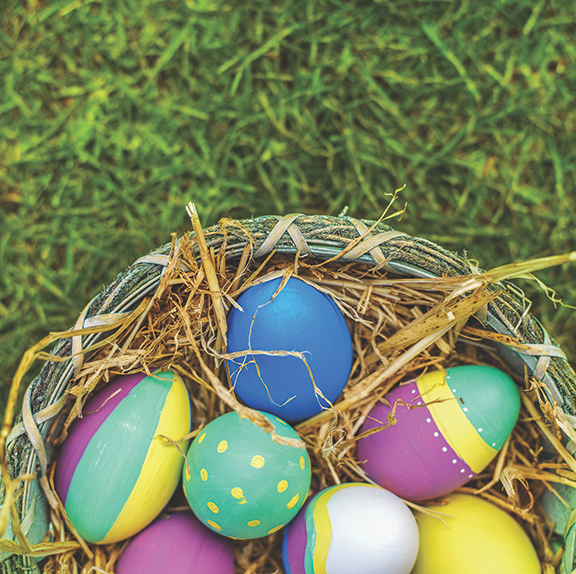The Valley Chronicle - Create colorful Easter eggsng
Create colorful Easter eggs
·
2 min read
[caption id="attachment_17259" align="aligncenter" width="576"] Metro Service
Metro Service
The practice of coloring eggs and offering them as decorative items is embraced during both secular and religious Easter celebrations.[/caption] Beautifully colored Easter eggs are a beloved holiday tradition. In many cultures, eggs represent new life, fertility and rebirth. For Christians, the Easter egg is symbolic of the resurrection, or eternal life, of Jesus Christ. The practice of coloring eggs and offering them as decorative items is embraced during both secular and religious Easter celebrations. Many fond memories and traditions are tied to Easter egg coloring, and some people may have their preferential kits or practices to achieve beautiful eggs. But embracing some new tips and tricks can produce beautiful eggs and make this beloved tradition even more fun. • Begin with firm, hard-boiled eggs. Bring a pot of water to a rolling boil. Then use a large spoon to gently lower the eggs into the water. Lower the heat to maintain a simmer and boil for just about 12 minutes. Transfer the eggs to a bowl with ice cold water and let them cool. Allow the eggs to cool completely before coloring. • Lay out newspaper or an old tablecloth to soak up any spills. Spills are inevitable, so don’t let them spoil the fun. In addition, empty egg cartons make ideal drying racks, so do not discard them. • Make patterns or other designs on the eggs. Use a white crayon to draw on the egg directly. The dye will not stick to the wax. Or use string, rubber bands, tape, stickers, or other items to create your pattern. Dip the egg and then remove the materials afterward to reveal the design. • Swirl a few drops of food coloring into shaving cream on a flat surface. Roll the eggs into the mixture, let dry, and then gently clean to remove the excess shaving cream. The result is a marbled effect. • Recognize that you don’t have to “dye” eggs at all. Use a sponge to dab on a design. Strips of tissue paper can be adhered to the egg with glue or shellac. Children may enjoy submerging the egg in glue and then coating it in glitter. The potential to create creative Easter eggs is limitless. Embracing new strategies can set this year’s eggs apart. -Metro Service
 Metro Service
Metro ServiceThe practice of coloring eggs and offering them as decorative items is embraced during both secular and religious Easter celebrations.[/caption] Beautifully colored Easter eggs are a beloved holiday tradition. In many cultures, eggs represent new life, fertility and rebirth. For Christians, the Easter egg is symbolic of the resurrection, or eternal life, of Jesus Christ. The practice of coloring eggs and offering them as decorative items is embraced during both secular and religious Easter celebrations. Many fond memories and traditions are tied to Easter egg coloring, and some people may have their preferential kits or practices to achieve beautiful eggs. But embracing some new tips and tricks can produce beautiful eggs and make this beloved tradition even more fun. • Begin with firm, hard-boiled eggs. Bring a pot of water to a rolling boil. Then use a large spoon to gently lower the eggs into the water. Lower the heat to maintain a simmer and boil for just about 12 minutes. Transfer the eggs to a bowl with ice cold water and let them cool. Allow the eggs to cool completely before coloring. • Lay out newspaper or an old tablecloth to soak up any spills. Spills are inevitable, so don’t let them spoil the fun. In addition, empty egg cartons make ideal drying racks, so do not discard them. • Make patterns or other designs on the eggs. Use a white crayon to draw on the egg directly. The dye will not stick to the wax. Or use string, rubber bands, tape, stickers, or other items to create your pattern. Dip the egg and then remove the materials afterward to reveal the design. • Swirl a few drops of food coloring into shaving cream on a flat surface. Roll the eggs into the mixture, let dry, and then gently clean to remove the excess shaving cream. The result is a marbled effect. • Recognize that you don’t have to “dye” eggs at all. Use a sponge to dab on a design. Strips of tissue paper can be adhered to the egg with glue or shellac. Children may enjoy submerging the egg in glue and then coating it in glitter. The potential to create creative Easter eggs is limitless. Embracing new strategies can set this year’s eggs apart. -Metro Service
S
